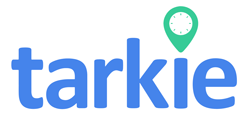Do you know how your overtime and break management affects your employees and your business? In the Philippines, following labor laws is key to protecting workers and keeping your business running smoothly. For small and medium enterprises (SMEs), it can be tough to keep up with these rules.
This article will help you understand overtime rules, the importance of following attendance management, and how to manage breaks correctly. You’ll learn how using advanced attendance tracking systems can make your work easier and safer.
Key Takeaways
- Understanding overtime regulations is crucial for compliance and employee satisfaction.
- Effective attendance management can significantly reduce legal risks and penalties.
- Real-time monitoring tools are essential for tracking compliance with labor laws.
- Implementing clear break policies can enhance workplace productivity.
- Employee rights should be prioritized to promote a positive work environment.
- Automating time tracking and payroll processes minimizes compliance issues.
- Regular audits of attendance records help maintain adherence to labor regulations.
Understanding Overtime Regulations in the Philippines
In the Philippines, labor laws clearly outline the obligations regarding overtime pay. It’s crucial for employers and employees to understand these rules. This ensures fair compensation and legal compliance. Article 83 of the Labor Code states that normal working hours should not exceed eight hours a day.
Any hours worked beyond this threshold require overtime pay. This pay is set at a minimum of 25% above the regular hourly wage.
Legal Standards for Overtime Pay
According to labor laws, working nine hours in a day earns 125% of the regular hourly wage for the extra hour. Compensation increases even more for work on rest days or public holidays, potentially reaching 200% of the regular rate. Some jobs, like managerial positions and field personnel, are not entitled to overtime pay.
Employers must carefully follow these regulations to avoid legal issues. Not paying for overtime can result in penalties from the Department of Labor and Employment (DOLE).
Common Mistakes Employers Make
Many businesses incorrectly classify employees under labor laws, leading to unpaid or underpaid overtime. This can cause severe consequences, including administrative penalties and even criminal prosecution for repeated violations. Employers need to have strong compliance guidelines and provide regular training to avoid these risks.
They can improve their understanding of overtime regulations by reviewing resources on labor laws, such as Understanding Overtime Pay in the Philippines.
The Importance of Compliance Guidelines in Managing Attendance
Compliance guidelines are key in managing attendance. They ensure legal rules are followed and protect employee rights. They also help create a fair work environment and reduce legal risks.
Protecting Employee Rights
Guidelines help protect employee rights. Keeping accurate records of work hours is essential for fairness. Employers who follow these rules show they care about their employees’ needs.
This builds trust and teamwork among staff. It shows respect for reasons like sickness or disability.
Reducing Legal Risks and Penalties
Not following guidelines can lead to big legal problems. Keeping accurate attendance records helps avoid issues. Using modern systems for tracking attendance can prevent fines.
Regular policy reviews and audits help avoid mistakes. This boosts productivity. By focusing on compliance, companies make their employees feel important and valued.

Managing Breaks Effectively in Your Workforce
It’s key for businesses to know the legal rules about breaks. Employees need meal and rest breaks to stay productive and healthy. Having clear policies helps everyone know their roles in these breaks.
Legal Requirements for Meal and Rest Breaks
In the Philippines, laws say employees must get breaks to avoid getting too tired. They need at least one hour for meals, when they can’t work. Also, they get short breaks of 5 to 20 minutes every four hours.
If businesses don’t follow these rules, they might face fines. So, it’s important to keep records of when breaks happen.
Best Practices for Implementing Break Policies
Creating good break policies is important. Regular breaks make employees happier and more productive. It’s also key to tell everyone about the rules clearly.
- Use time and attendance software to track breaks. This helps keep up with the rules.
- Send reminders about break times. This makes sure everyone knows when it’s time to take a break.
- Check your break policies often. This helps keep up with new laws and what employees think.

Using tools for compliance helps businesses keep up with break rules. This way, they can make policies that work for everyone. It helps create a better work environment.
Time Tracking Software: A Solution for Attendance Management
Effective attendance management is key for businesses to follow labor laws about overtime and breaks. Using time tracking software is a modern way to improve accuracy and make payroll easier. It saves money and cuts down on mistakes, helping with tough rules.
Benefits of Automated Time Tracking
Businesses gain a lot from using automated time tracking. Here are some main benefits:
- Payroll costs can drop by up to 4% with automation.
- Timekeeping errors can fall by 80%, making things more accurate.
- It helps follow labor laws better, tracking overtime and breaks right.
- Payroll gets easier, reducing mistakes, which is great for big teams.
- Getting data fast helps make decisions quicker by up to 25%.
- Employees feel better, with 10-15% more happiness, because they get paid right.
Choosing the Right Software for Your Business
When picking time tracking software, look for features that fit your needs:
| Type of System | Ideal For | Benefits | Cost Range |
|---|---|---|---|
| Biometric Systems | High-security or large businesses | Enhanced security | Higher cost |
| Card Swipe Systems | Small to mid-size businesses | Simple and cost-effective | Low cost |
| Mobile App-based Systems | Distributed teams or field workers | Flexible and accessible | Varies by device requirements |
| Cloud-based Systems | Multi-location businesses | Allows clocking in from any device | Requires stable internet connection |
| Punch Clock Systems | Small, straightforward operations | No network required | Low cost |
![]()
How to Handle Overtime and Breaks Within Attendance Compliance Guidelines
Managing overtime and breaks well is key to keeping attendance rules in check at work. Overtime is paid at 1.5 times the regular rate, which can cost a lot if not done right. So, it’s important for companies to have clear rules on overtime and breaks.
Good attendance management can save money by avoiding extra overtime hours. Studies show that using automated time tracking can cut down on tracking time by 40%. This leads to more work done and up to 20% more productivity.
It’s also good for employers to teach employees about labor laws and breaks. Talking openly about overtime and breaks helps solve problems before they start. Accurate tracking can cut down on unauthorized overtime by 40%, keeping everyone happy and following the rules.

Using cloud-based time and attendance software can also help fix time issues faster. Having a clear policy and checking attendance data often can make work run smoother and follow the rules better.
| Strategy | Benefit |
|---|---|
| Automated Time Tracking | Reduces manual tracking overhead, saving up to 40% of time spent. |
| Clear Overtime Policies | Minimizes financial implications related to unauthorized overtime. |
| Regular Training | Keeps employees informed about labor laws and compliance issues. |
| Open Communication | Encourages employee feedback, leading to a more satisfied workforce. |
| Cloud-based Attendance Software | Accelerates the resolution of discrepancies by 50%. |
In summary, smart handling of overtime and breaks can boost compliance, employee happiness, and work output.
Employee Rights Related to Overtime and Breaks
Employee rights about overtime and breaks are key in the workplace. They are mainly covered by FLSA guidelines. These rules help ensure workers get fair pay and enough rest. Knowing these rights helps avoid conflicts and makes the workplace better.
Understanding FLSA Guidelines
The Fair Labor Standards Act (FLSA) sets rules for overtime and breaks. Workers usually work 8 hours a day or 40 to 48 hours a week. They get overtime pay, which is 1.5 times their regular wage, for more than 40 hours.
There’s a 25% extra pay for overtime on weekdays. But, a 30% extra pay is given for work on rest days.
The FLSA also says workers must get enough breaks. They must get at least 1 hour for a meal break, not counted as work time. Many laws also say workers should get a 15-minute break every 4 hours to stay productive and avoid getting too tired.
Common Employee Questions and Concerns
Many workers wonder about their rights under labor laws. They often ask about the difference between exempt and non-exempt employees. This matters because it affects if they get overtime pay. They also want to know how unpaid breaks affect their pay.
Regular talks about FLSA rules can clear up these doubts. It helps make sure everyone knows their rights.
Workers should know what happens if employers don’t follow the rules. This can lead to fines, penalties, and even investigations. Knowing this helps workers feel more secure and builds trust in the workplace.
| Key Aspect | Employee Rights | Employer Responsibilities |
|---|---|---|
| Working Hours | Standard working hours are 8 hours per day | Ensure compliance with maximum limits on working hours |
| Overtime Pay | 1.5 times regular wage for hours worked over 40 | Provide accurate overtime payments according to FLSA |
| Meal Breaks | At least 1 hour break, not counted in working hours | Implement break schedules in adherence to regulations |
| Rest Days | One rest day for every six consecutive working days | Ensure proper scheduling to adhere to rest day policies |
| Employee Classification | Awareness of exempt vs. non-exempt status | Correctly classify employees to avoid legal issues |
Creating a Fair Overtime Policy
Creating a fair overtime policy is key to a clear workplace. Employers need to know the difference between exempt and non-exempt workers. Non-exempt workers get overtime pay for extra hours worked.
By knowing these rules, companies can follow the law better. This helps avoid confusion.
Determining Exempt vs. Non-Exempt Employees
Figuring out if an employee is exempt or non-exempt is important. It depends on their job and pay. Non-exempt workers get 1.5 times their regular pay for extra hours.
Companies should check these classifications often. This is because overtime laws can change in different places.
Setting Clear Expectations with Employees
Telling employees about overtime and breaks is crucial. Companies should teach them about these rules in training. This helps avoid misunderstandings.
Keeping employees informed boosts morale. It makes the workplace better for everyone.
Using Attendance Management Tools to Monitor Compliance
Attendance management tools are key for following labor laws and company rules. They have features that make tracking easier and work better. Companies that use these tools well save money and make their employees happier.
Features to Look for in Attendance Management Systems
When picking attendance management tools, look for features that meet your needs. Here are some important ones:
- Real-time reporting: It lets you quickly see attendance records and spot any problems.
- Alerts for upcoming overtime: These alerts help avoid breaking labor laws by mistake.
- Break tracking: It checks if employees are following company rules about breaks.
- Integration capabilities: The system should work well with payroll to save time.
- Data analytics: It helps find patterns in attendance to make better decisions.
How Real-Time Data Can Improve Compliance
Real-time data changes the game for companies wanting to follow rules. With attendance tools, businesses can:
- Save up to 30% on costs by automating attendance tracking.
- Lower time theft by 50% with GPS in attendance systems.
- See a 70% boost in monitoring productivity.
- Make employees follow labor laws better by 30% with good attendance systems.
- Use AI to guess absenteeism patterns with up to 20% accuracy.
These features, with real-time data, help companies manage attendance well. The right tools are crucial for following rules, improving work, and making employees happy.
Conclusion
Managing overtime and breaks is key to a legal and productive workplace in the Philippines. Companies that focus on attendance management protect employee rights. This also lowers the risk of expensive legal battles.
The Department of Labor collected over $270 million in back wages from employers. This shows the big risks of not following overtime rules.
Using automated time and attendance systems is very helpful. These systems cut down payroll mistakes by 10% and overtime costs by 5%. This leads to better compliance and happier employees.
Businesses with clear time and attendance policies see a 30% drop in violations. This makes them stand out in a competitive market.
Talking openly about overtime policies makes the workplace more transparent. It also helps employees know their rights. By focusing on good attendance management, companies can handle labor laws well. This ensures they follow the rules and have a great work environment.
